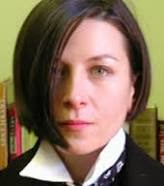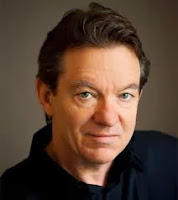Donna Tartt’s spellbinding new novel, The Goldfinch, stirred me to the point that I sent a text to best-selling author Sarah Bird saying that I wanted to take her up on her suggestion that we compare notes after I’d finished The Goldfinch. She texted me back saying, “You won't believe this, but we're on Grand Cayman Island! Would love to talk Goldfinch when I get back.” Since I feared I was cutting into Sarah’s Tortuga Rum Punch time, I cut our chat short, but our brief back-and-forth did include the descriptors “dazzling,” “stunning,” “astonishing,” and “overabundance.” The Goldfinch was Sarah’s maiden venture into audio books, and she was completely wowed. As I didn’t relish straining a hand trying to hold up the 784-page tome, I, too, did the audio version, which was particularly well presented by actor, David Pittu.
Wednesday, January 1, 2014
The Goldfinch by Donna Tartt
Donna Tartt’s spellbinding new novel, The Goldfinch, stirred me to the point that I sent a text to best-selling author Sarah Bird saying that I wanted to take her up on her suggestion that we compare notes after I’d finished The Goldfinch. She texted me back saying, “You won't believe this, but we're on Grand Cayman Island! Would love to talk Goldfinch when I get back.” Since I feared I was cutting into Sarah’s Tortuga Rum Punch time, I cut our chat short, but our brief back-and-forth did include the descriptors “dazzling,” “stunning,” “astonishing,” and “overabundance.” The Goldfinch was Sarah’s maiden venture into audio books, and she was completely wowed. As I didn’t relish straining a hand trying to hold up the 784-page tome, I, too, did the audio version, which was particularly well presented by actor, David Pittu.
As you’ve no doubt gathered by now, yes, The Goldfinch is a standout book of the
year, and is one of my top five favorites of 2013. Here’s why:
Most (but not all) of Tartt’s writing is so
illuminating that it takes your breath away and sends you down introspective
bunny trails.
In researching to write this review, I learned a
fascinating new word, Bildungsroman, a German word used in literary criticism
to describe the coming-of-age literary genre, which is how many reviewers (but
not this reviewer) categorized The
Goldfinch.
Before I get further into my review, let’s look at the
author, Donna Tartt (pictured), who is from the state that claims to have more
famous writers (Faulkner, Welty, Grissom, Williams, Foote) than people who can
read - Mississippi. Her college mates at Bennington (Vermont) included
boyfriend, Bret Easton Ellis (American
Psycho and Less Than Zero) and
friend, Jonathan Lethem (Motherless
Brooklyn and The Fortress of
Solitude). Here’s a link to some hard-to-find facts about
Tartt’s personal history, which is pretty intriguing. Tartt’s first book, Secret History (1992) was a runaway best
seller, and her devotees (including Stephen King) have waited patiently and
impatiently for her to publish again. You may not care about Donna Tartt right
now, but after you read her, you will; but back to The Goldfinch.
New Yorkers, Theo Decker (age 13) and his mom step into the
Metropolitan Museum of Art to escape the rain, and to view mom’s favorite
piece of art, The Goldfinch (pictured) by Dutch artist (and student of
Rembrandt) Carel Fabritius. Also viewing the painting is an older gentleman
and a young, beautiful girl, who catches Theo’s eye. A terrorist bomb goes off
in the museum taking the life of his mom. As Theo, stunned but unhurt, attempts
to escape the catastrophe, the older gentlemen, in his dying throes, beseeches
Theo to take The Goldfinch to safety, and for reasons on which one can only
speculate, instructs him to contact the gentleman’s partner in a local antiques
restoration shop. Theo escapes the destruction with the painting, but because
it is so strongly tied to his grief for his deceased mother, he cannot bare to
return it to the museum. And thus the stage is set for the reminder of the
story, which spans 20 years or so and involves Theo’s migration from orphan to
temporary ward of a dysfunctional Park Avenue family, to the custody of his
equally dysfunctional father in a skanky suburb of Las Vegas, and back to New
York, where he eventually goes into business with the museum gentleman’s
antiques shop partner. And then there’s Amsterdam, about which I will not speak
(spoiler). Okay, let’s just say that Theo gets involved in criminal
activity.
Along the way he encounters a long and colorful list of characters,
some of which loom very large in his life. One is Theo’s best friend, Boris, a
Ukrainian delinquent with the savvy of a senior, and the amorality,
recklessness and sexual magnetism of a pirate. Perhaps you can tell that I was
particularly attracted to Boris.
Going Clear: Scientology, Hollywood, and the Prison of Belief by Lawrence Wright
It didn’t, in that it was much like Reitman’s book. It
covered the wacko L. Ron Hubbard and the very secretive and very strange
shenanigans of this infamous cult that believes in some stuff that makes you
want to squint your eyes and say to no one in particular, “What is wrong with
those people?” It also didn’t add much new info about how Scientology courts
celebrities (with a good bit of success I might add). And in my opinion, Wright’s
version wasn’t as well written. For what it’s worth, however, what it lacked in
delivery, it made up for in detail – gobs of detail.
What kept me reading in spite of the above was Wright’s
addition of more information about Hubbard’s personal life - his suspected
faked war service, his marriage, his back-to-back con-jobs that kept him in
tailored suits and Cuban cigars and his disciples penniless and subservient.
There was also much more detail about his marriages and children, all of which
were surprisingly normal as long as wife-y didn’t challenge Hubbard in any way,
which they all eventually did, leading to a string of divorces.
Subscribe to:
Comments (Atom)










